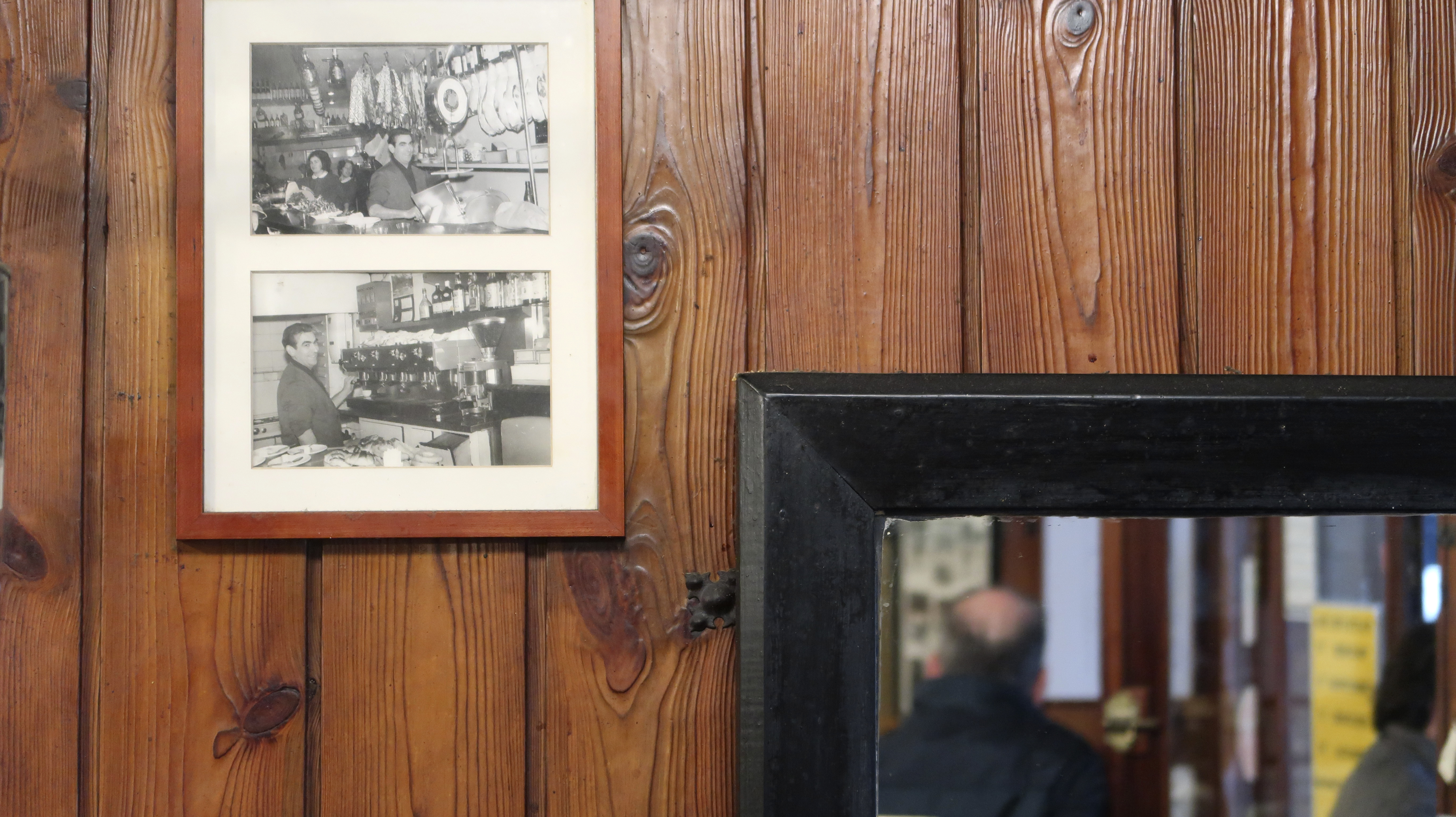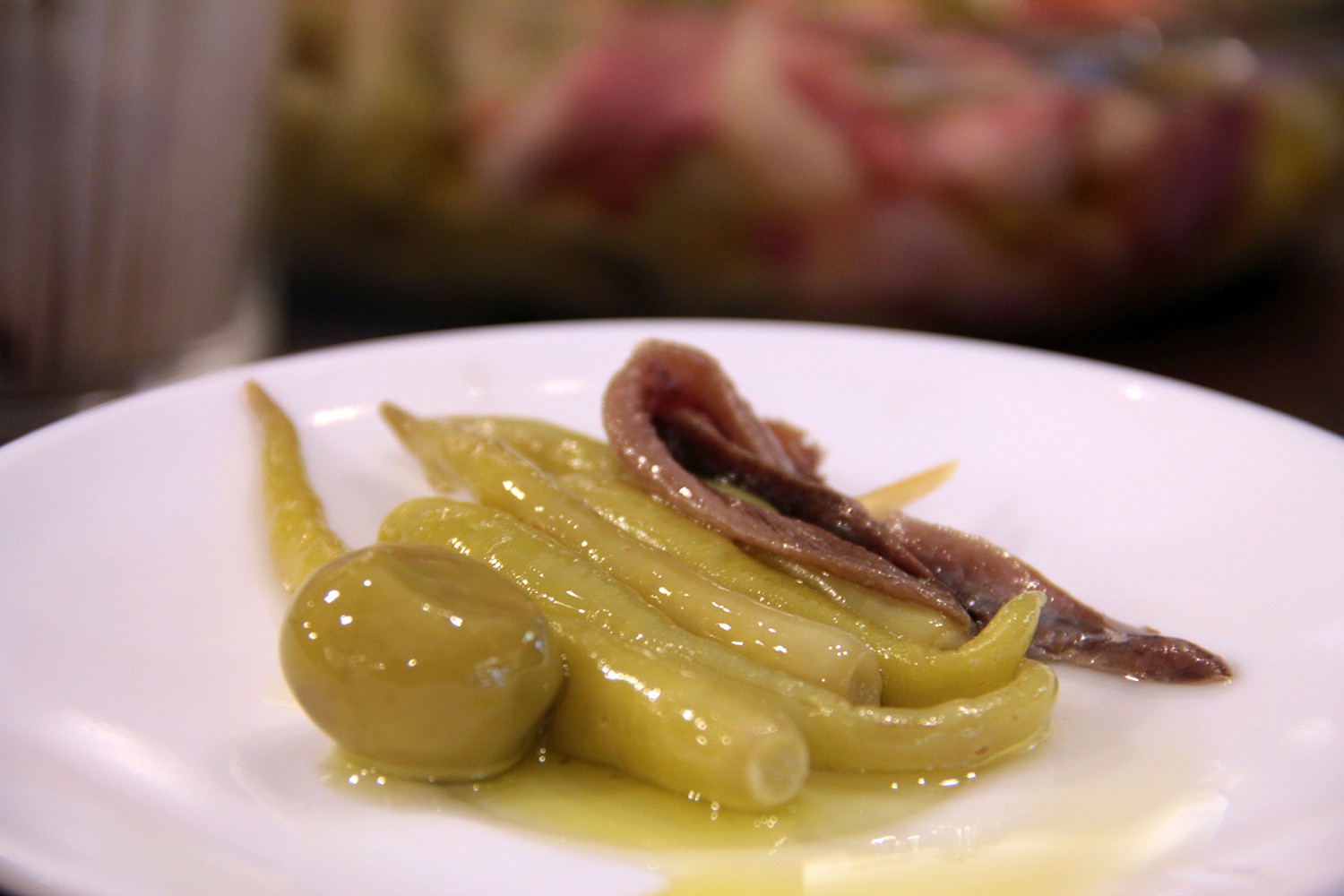If we had to select a single iconic and pioneering pintxo from our list, it would be the Gilda. Mainly because the origin of Gilda is, in fact, the origin of all pintxos. An origin that, like other great discoveries, arose by chance. Main ingredients were there, standing on the bar counters, until a client of Casa Valles, a bar located at Reyes Católicos street in San Sebastián, screwed them in a stick. That changed everything.
Ingredients
There is no mystery in the recipe of La Gilda. The success lies in the combination of bitter and acid flavors, and in the quality of the products. Because anchovies, chilli peppers or olives are not all the same.
The anchovy can be found in the Pacific Ocean, in the Atlantic, and also. the Mediterranean or in the Black Sea. But within the anchovy species, the “Engraulis encrasicolus” is the most valuable, and that is what we can find in our Gulf of Biscay. This oily fish is hooked in spring and early summer, when it rises to the surface, to feed and reproduce. It has many advantages such as its richness in magnesium, iodine, and Omega 3 acids, as well as in B,A and D vitamins.
The anchovies used for making Gildas are preserved in oil. Mention peppers, we must talk about Ibarra, a small town Gipuzkoa, and their famous peppers, a.k.a “Langostinos de Ibarra” (prawns of Ibarra). They are an indigenous variety who owns the official Appellation “Eusko Label”. Harvest occurs between July and august, and among its virtues are its plentiful phosphorus, calcium and A,B and C vitamins. Chilli peppers used for La Gilda are pickled.
Third major ingredient are pitted olives of Manzanilla. They contain Omega 3 and Omega 6 fatty acids, as well as A,B and E vitamins, iron, magnesium, calcium and sodium. Olives are, as chilli peppers, pickled.

History
In the 40s of the last century, it was very common to help drinks with some olives, anchovies, or some other pickles. All at once, those helped to drink and, being salty, pushed customers to continue drinking. Those years Blas Vallés, the grandfather of the current owners, ran Casa Vallés. He was from Olite, in Navarra, from where he moved to San Sebastian in 1942 to set up a commercial winery . In 1946 he got the bar license, but he also continued to sell cask-wine.
But this history has another key figure inside Casa Valles: Joaquín Aramburu, a.k.a. “Txepetxa”. One of the regular patrons. Nobody knows how many hours have spent Txepetxa sitting and drinking in that bar counter until that day when, at his own risk, he took an anchovy, a chilli pepper and an olive, and skewered them in a stick. This wisecrack came together among the other regulars, and soon they started to ask for that combination.

Green, salty, and a little spicy
It was also Txepetxa himself who put name to this first pintxo. The movie “Gilda” was released in Spain at Christmas 1947. It raised a great controversy worldwide for its sexyness, making Rita Hayworth one of the biggest sex symbols of the moment. Txepetxa found similarities between the character player by the actress and the new pintxo: both were”green, salty, and a little spicy”.
We don´t know wether the actress, of Spanish origin, had news of this modest but flavorful tribute, but doubtless she would have liked it much more than the one that U.S. Army made to her: an Atomic Bomb that was given her name and embellished with a picture of her, before testing in 1946 in the Bikini atoll.
The fact is that the standing wave this Gilda pintxo started reached to almost all bars in San Sebastián, and continued to expand throughout the entire Basque Country and most of Spain. It made explode further development of pintxos culture. And, despite being the first, after so many years, it remains one of the key and most successful pintxos.
Anyway, having 99 pintxos on our list, why stay alone with one? Have you tried them all?

